Today, I’m sharing 10 easy gochujang recipes you can make using Korean chili paste.
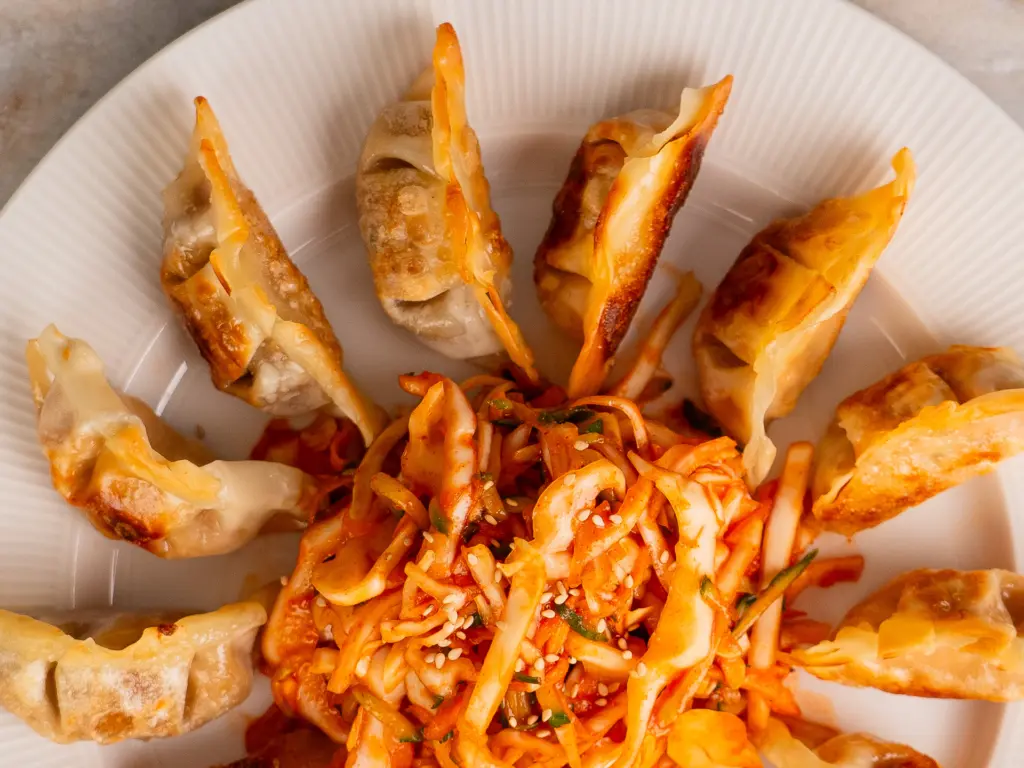
- Gochujang: https://amzn.to/3XstNFi (US)
Table of Contents
What is Gochujang Made of?
Gochujang, along with doenjang (soybean paste) and ganjang (soy sauce), is one of Korea’s most iconic fermented condiments. It is made primarily from Korean red chili powder (gochugaru) mixed with glutinous rice, fermented soybean powder (meju), salt, and water. The mixture is sealed and left to ferment in a cool place over time. To add sweetness, ingredients such as barley malt powder, honey, or sugar are often added. This fermentation process gives gochujang its signature balance of spicy, sweet, and savory flavors.
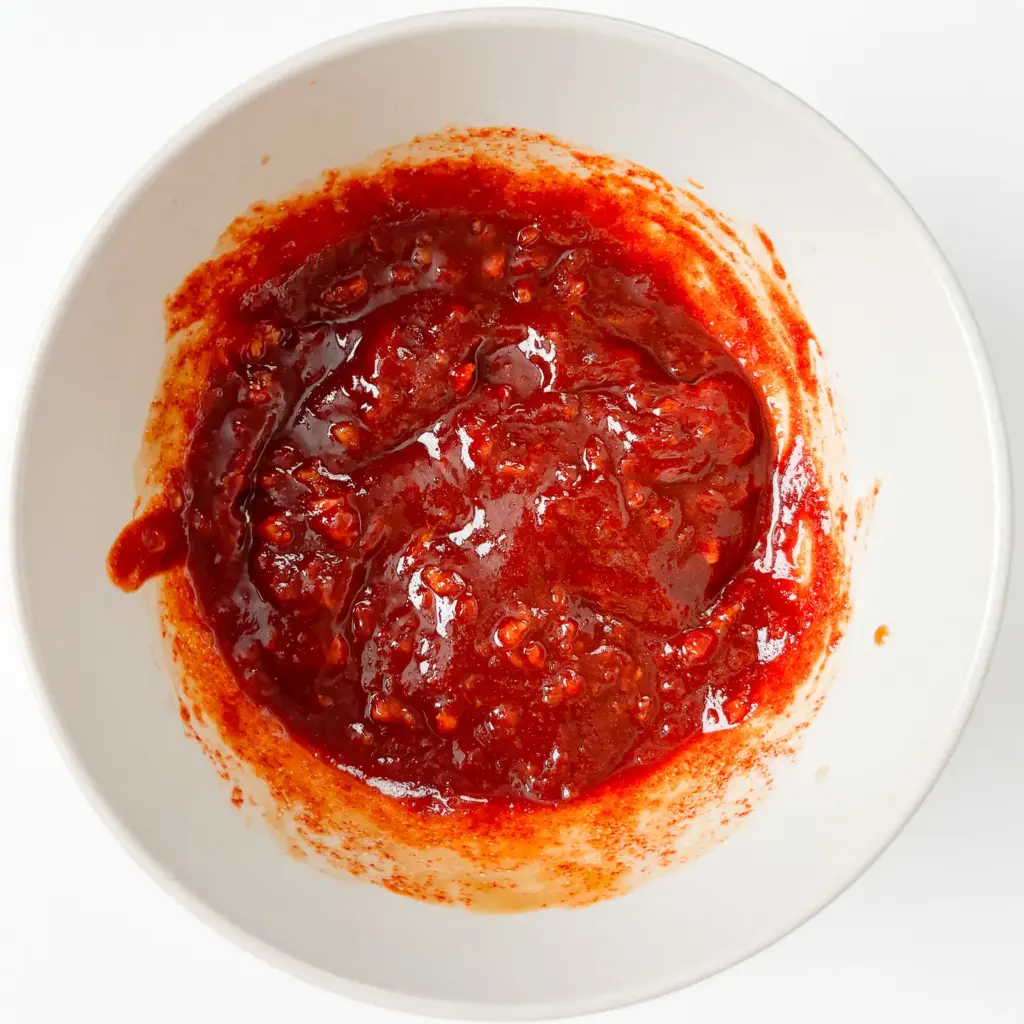
Is Gochujang Spicy?
Gochujang has a type of spiciness that builds up slowly. At first, you taste a sweet and slightly salty flavor, but then the heat suddenly kicks in. For Koreans, gochujang doesn’t feel spicy at all. But I’ve often seen my non-Korean friends say it’s pretty hot for them.
If you compare it using the Scoville Heat Units (SHU):
- Tabasco sauce: around 2,500–5,000 SHU
- Sriracha: around 1,000–2,500 SHU
- Gochujang: around 1,000–2,000 SHU
So gochujang is less spicy than Tabasco and has a similar heat level to Sriracha.
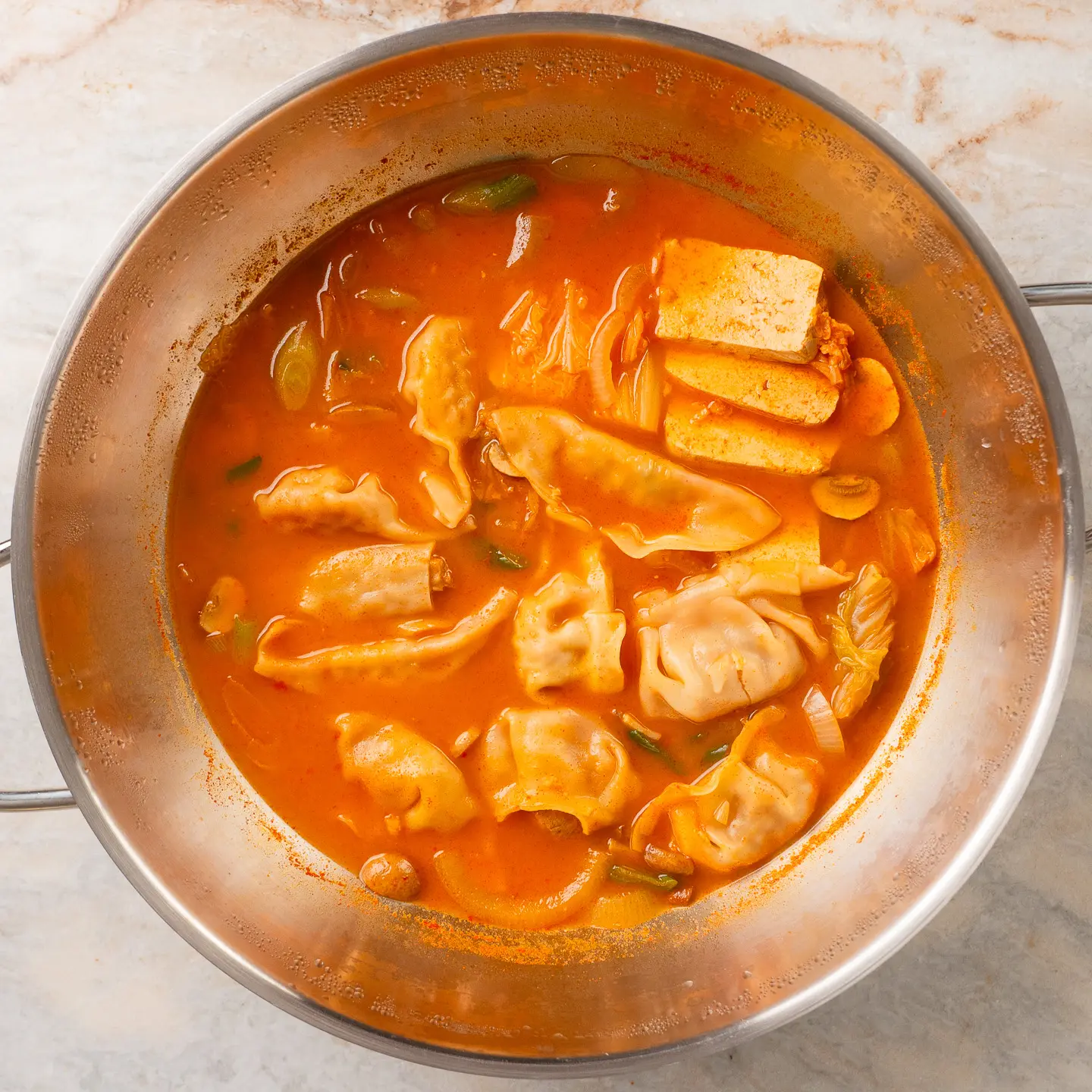
What Can I Use Gochujang For?
Gochujang is incredibly versatile in Korean cooking. You can use it as a dipping sauce for vegetables or meat, and it also plays a key role in a wide range of dishes—from side dishes to soups, stews, and braised meals.
Today, I’ll show you 10 delicious Korean gochujang dishes that use gochujang.
10 Easy Gochujang Recipes
Tteokbokki 떡볶이
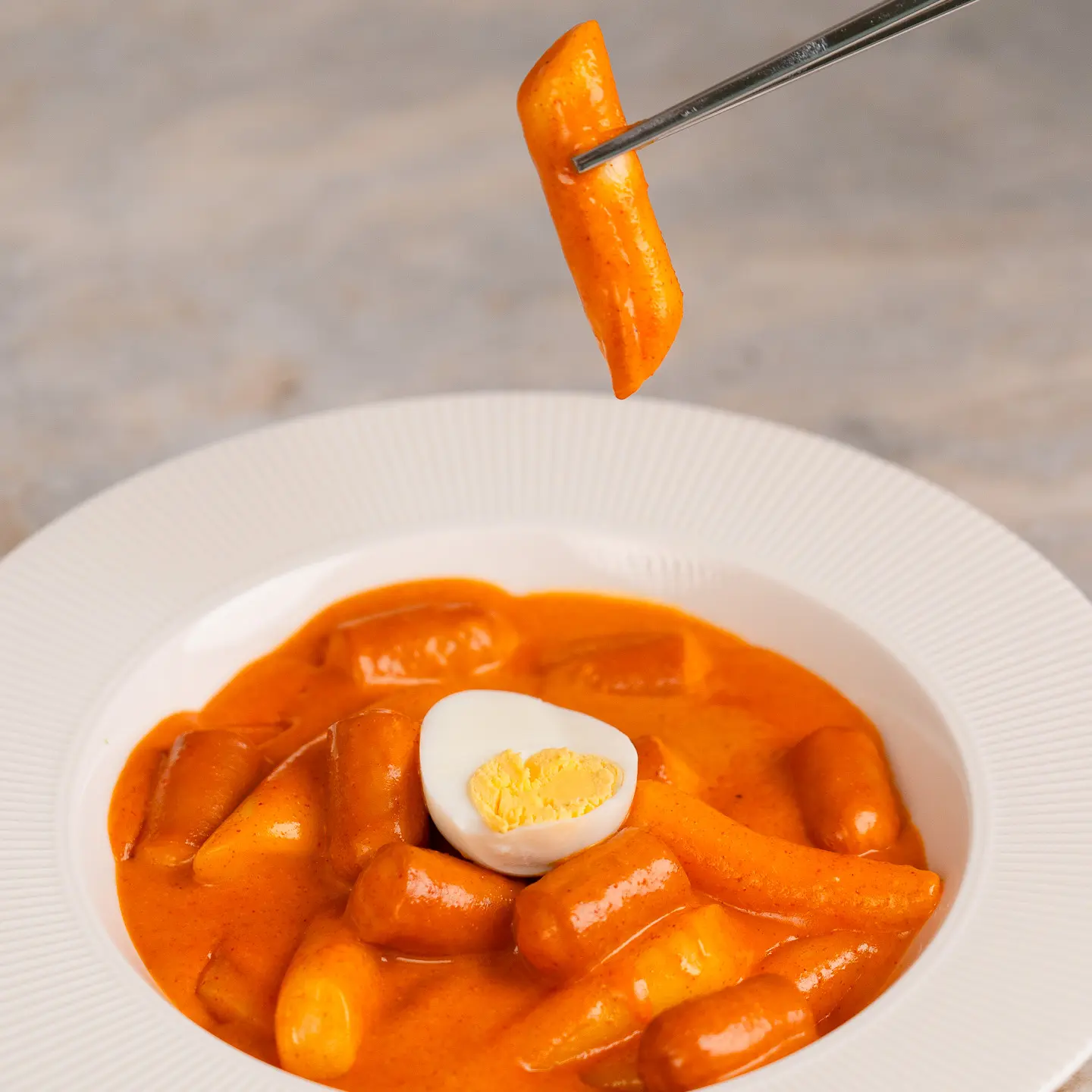
The first dish that comes to mind when thinking of gochujang recipes is Tteokbokki. One of the most iconic Korean street foods, tteokbokki is made by stir-frying cylindrical rice cakes in a rich, gochujang-based sauce. The rice cakes are typically long and chewy, made from wheat or rice flour. The dish is commonly cooked with fish cake, cabbage, and onion and is often topped with boiled eggs, mozzarella cheese, or crispy fried snacks for added flavor. A popular variation is Rabokki, which adds instant ramen noodles to the dish for a heartier meal.
- Rice Cake (Tteok): US
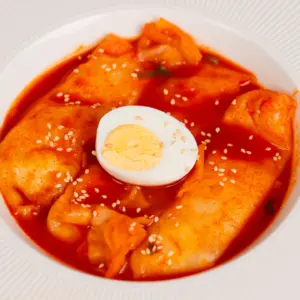
Because tteokbokki is a high-calorie comfort food, many K-pop idols and actors have come up with a lighter version that uses rice paper instead of traditional rice cakes. They roll cheese inside the rice paper to reduce the carbohydrate content while maintaining the satisfying chewy texture.
If you’re craving tteokbokki but want to stay in shape, try this cheese rice paper tteokbokki recipe. It strikes the perfect balance between flavor and fitness.
Bibimbap 비빔밥
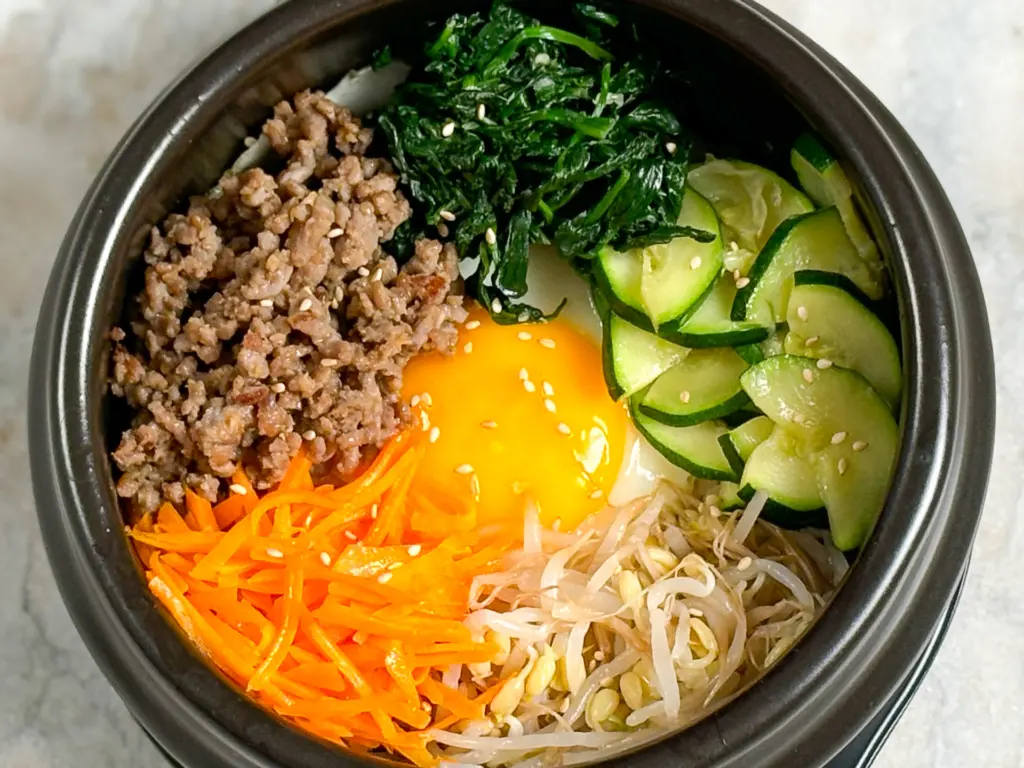
Bibimbap is a classic Korean dish where warm rice is topped with various ingredients like seasoned vegetables, meat, and a fried egg, then mixed together with sauce before eating. The most iconic version uses gochujang, but it can also be made with doenjang (soybean paste) or soy sauce-based seasoning.
When you order bibimbap at a Korean restaurant, it typically comes with sautéed meat, seasoned spinach, bean sprouts, and other veggie side dishes neatly arranged on top. This is a dolsot bibimbap recipe—just like the kind you’d get at a traditional Korean restaurant in Korea. Honestly, it might even taste better.
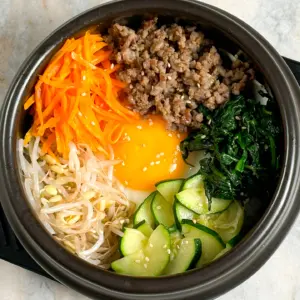
- Earthenware Pot (Ttukbaegi): While the proper way to make dolsot bibimbap is with a stone bowl, a ttukbaegi is a great alternative. It’s super useful—not only for bibimbap but also for stews and steamed eggs.
- Recommended: US | Germany | Belgium, Netherlands | UK
Bibim Guksu 비빔국수

This Bibim Guksu is a gochujang dish where the gochujang seasoning is the main highlight. Bibim guksu(spicy Korean cold noodles) is a refreshing Korean noodle dish that can be made with either soy sauce or gochujang. The gochujang version is especially popular—thin wheat noodles like somen or jungmyeon are mixed with a sweet, tangy, and spicy gochujang sauce. It’s often topped with sliced cucumber or a boiled egg, and sometimes a bit of kimchi for extra kick and crunch.
- Somen Noodles: US | Netherlands, Belgium | Germany
This recipe is my mom’s kimchi bibim guksu. The bold, spicy-sweet, and slightly cool flavor makes it a dish I always crave in the summer.
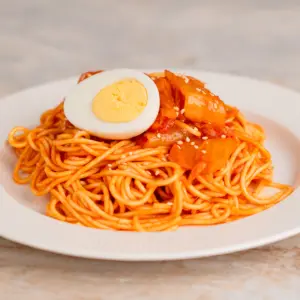
Jeyuk Bokkeum 제육볶음
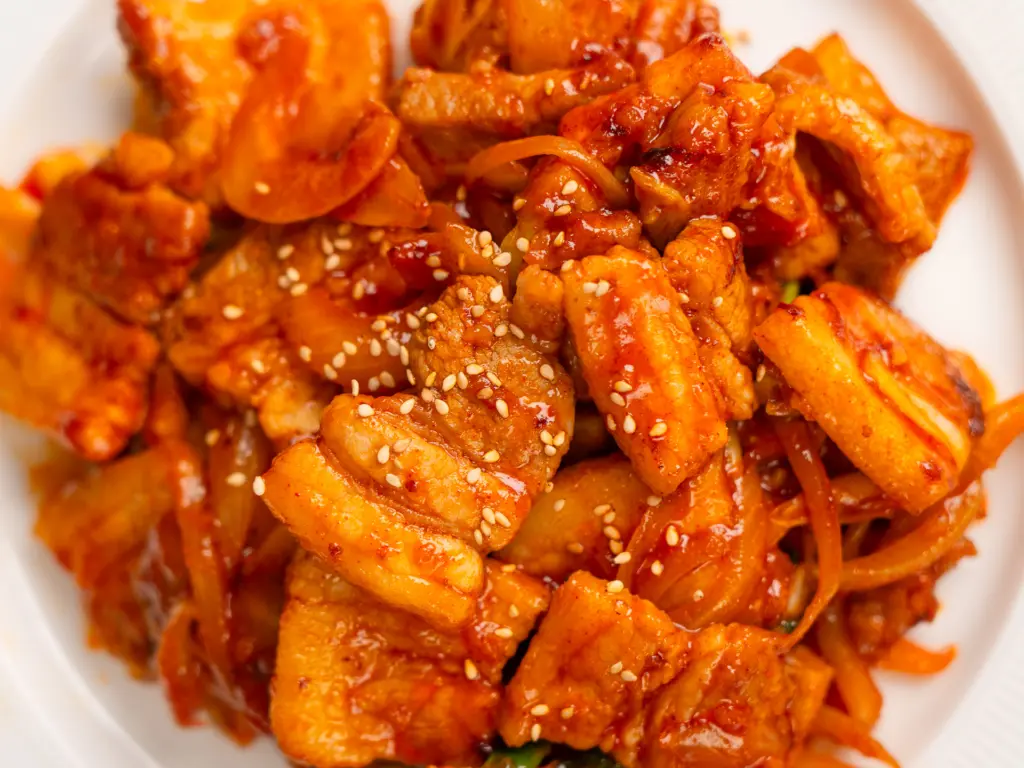
Jeyuk Bokkeum(spicy stir-fried pork) is a beloved Korean gochujang dish made by stir-frying thin slices of pork with gochujang, soy sauce, sugar, and other seasonings. It’s usually cooked with vegetables like onion and green onion, creating a rich, savory, and slightly spicy flavor that pairs perfectly with a bowl of warm rice.
For many Koreans, especially Korean men, this is the ultimate comfort food. Here’s an easy, 15-minute recipe that shows you how to make it at home with maximum flavor and minimum effort.
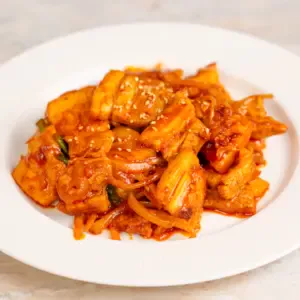
Gochujang Jjigae 고추장찌개

You’ve probably heard of doenjang jjigae, a soybean paste stew, but you might not be familiar with gochujang jjigae. Unlike doenjang jjigae, this stew uses gochujang, a red chili paste, as the main seasoning. It’s made with vegetables like potatoes and onions, along with tofu. All of these ingredients are simmered together in a rich, spicy broth. Gochujang Jjigae is the gochujang food where the flavor of gochujang truly takes center stage.
- Earthenware Pot (Ttukbaegi): It’s a super versatile piece of Korean kitchenware that lets you cook all kinds of stews, steamed eggs, and even Dolsot Bibimbap.
- Recommended: US | Germany | Belgium, Netherlands | UK
A common mistake I often see in non-Korean kimchi stew recipes is adding gochujang. Since gochujang has such a strong flavor, adding it to kimchi stew actually turns the dish into gochujang jjigae. So, if you’re making an authentic kimchi jjigae, skip the gochujang! Gochujang jjigae is known for its bold, savory flavor with a spicy kick, a touch of saltiness, and a hint of sweetness.
Dakgalbi 닭갈비
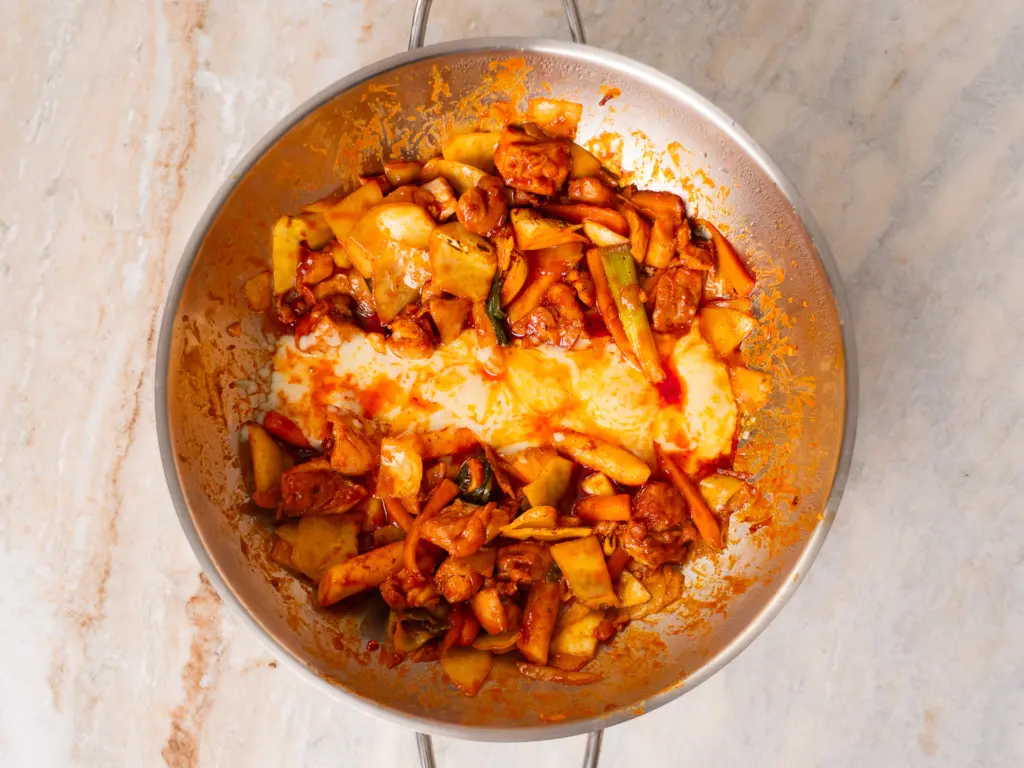
Dakgalbi (spicy fried chicken) is a popular Korean gochujang food consisting of bite-sized pieces of chicken stir-fried in a marinade of gochujang and soy sauce. It is typically cooked with cabbage, sweet potatoes, onions, and sometimes chewy rice cakes (tteok). Despite its name, which usually refers to ribs, dakgalbi is almost always made with tender chicken thigh meat in Korea.
- Stainless Steel Wok: For dishes like Dakgalbi, Korean braised recipes, or even Budae-jjigae, this deep wok is essential. Once you have it, you’ll find it incredibly useful for cooking a wide variety of Korean meals.
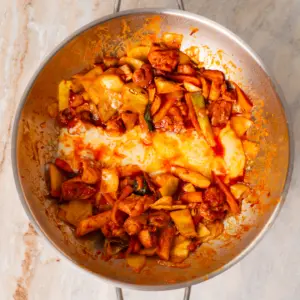
This recipe recreates the exact taste of a famous dakgalbi restaurant near Gangnam Station in Seoul. The highlight? A gooey cheese waterfall in the center! Dip the spicy chicken into the melted cheese—it’s so addictive that you won’t be able to stop eating it!
Gochujang Tteok 고추장떡
Gochujang-tteok (gochujang pancake), a type of Korean pancake, is made by mixing flour, water, and gochujang into a batter, which is then pan-fried in oil. It’s probably the easiest gochujang recipe among all gochujang dishes.
The recipe is simple: just one cup of flour, one and a half cups of water, one stalk of green onion, and one tablespoon of gochujang. You can also add extra vegetables, such as onions. For an extra-crispy texture, replace the flour with Korean pancake mix (buchimgaru).
Korean Yangnyeom Chicken 양념치킨

Korean fried chicken (Sweet and Spicy Fried Chicken) is famous for its ultra-crispy texture and bold flavors. The two most iconic styles are plain crispy fried and yangnyeom (sweet and spicy) chicken. Yangnyeom chicken is also a gochujang food! The gochujang-based yangnyeom sauce is what sets it apart. It’s sweet, spicy, and tangy—made with gochujang, ketchup, sugar, and more.
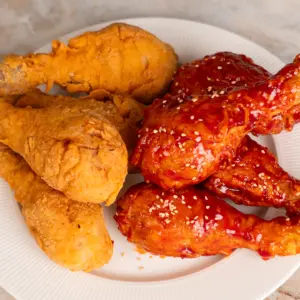
This recipe is for Ban Ban Chicken, the half-and-half combo that’s wildly popular in Korea. I’ve tested and combined recipes from Korean chefs and restaurants to bring you the crispiest, most delicious Korean fried chicken. The highlight is the yangnyeom sauce, with one secret ingredient that makes it taste exactly like the real thing in Korea. Don’t skip it!
Jang Kalguksu 장칼국수
Jang Kalguksu is a comforting Korean noodle soup made with a broth base of doenjang (soybean paste) or gochujang (Korean red chili paste). The spicy, gochujang-based version is especially popular in the Gangwon province. The broth can be made with meat or seafood stock, and the gochujang gives it a deep, spicy-savory flavor with a slightly sweet note. The chewy knife-cut noodles thicken the broth slightly, making it rich and hearty. It’s a perfect gochujang dish for a cold day or when you’re craving something warm and spicy.
Dakbokkeumtang 닭볶음탕
Dakbokkeumtang—also known as Dakdoritang—is a spicy Korean chicken stew that’s more of a braise than a stir-fry. It’s made by simmering chopped chicken in a savory-sweet gochujang-based sauce with gochugaru (Korean chili flakes), soy sauce, garlic, scallions, and sugar. Vegetables like potatoes, onions, and carrots add body and sweetness to the dish. The best way to enjoy it? Spoon the flavorful sauce over rice and mash some of the potato into it for the ultimate Korean comfort meal.
- Stainless Steel Wok: A deep stainless steel wok is perfect for Korean dishes like Dakbokkeumtang, stews, or even stir-fried meals. It’s one of the most versatile pans to have for Korean home cooking.
Disclosure: Blonde Kimchi is part of the Amazon Services LLC Associates Program, an affiliate advertising program that allows websites to earn advertising fees by linking to Amazon.com and promoting products.
